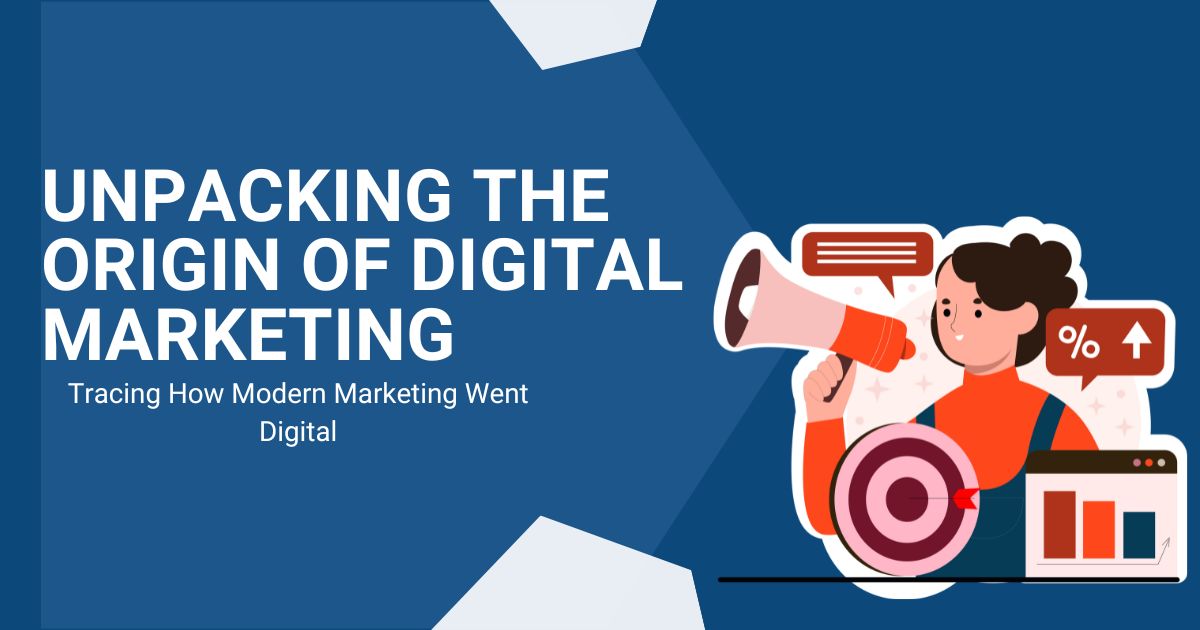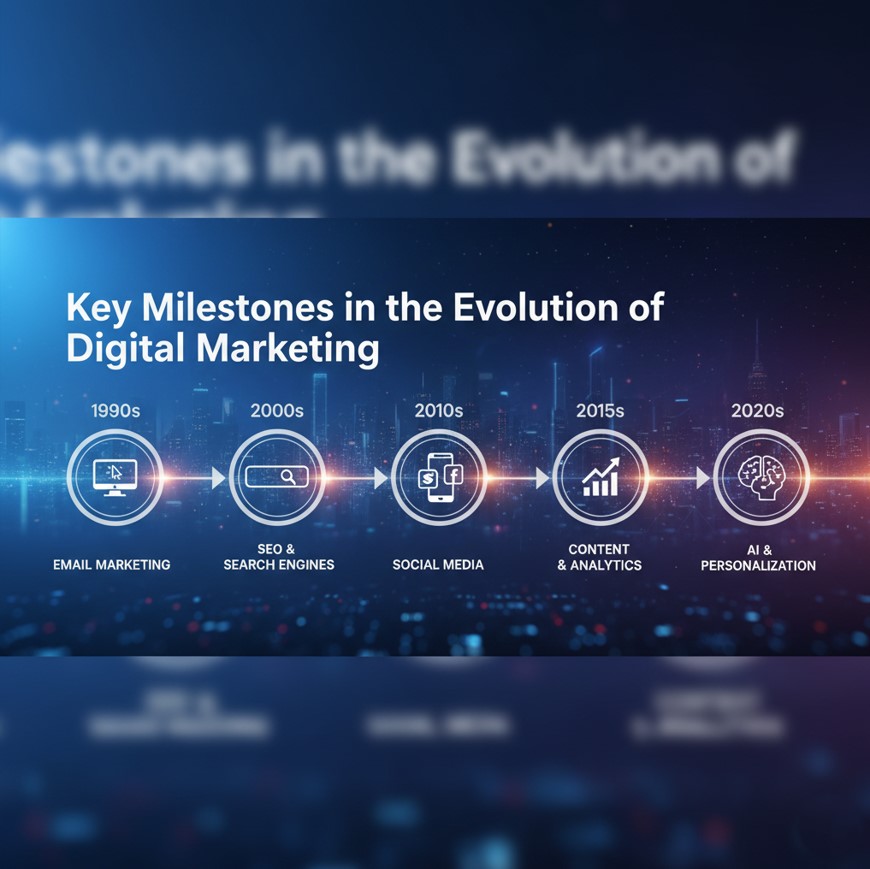
Digital marketing has become a staple for businesses in the modern world, but have you ever wondered when and how the term “digital marketing” was first coined? While the phrase seems ubiquitous today, its origins trace back to the emergence of the internet and the development of online technologies. This article dives into the history of the term, explores its evolution, and highlights the milestones that shaped the landscape of digital marketing as we know it today.
Whether you’re a marketer, entrepreneur, or simply curious about the digital revolution, you’ll gain insight into where it all began and how far we’ve come.
Early Beginnings of Digital Marketing
Marketing Before Digital
Before digital platforms took center stage, marketing revolved around traditional media like print advertisements, radio, and television. These channels allowed brands to reach their audiences in a one-way communication model, with little room for interaction or personalization.
However, with the rapid advancement of technology throughout the 20th century, new methods began reshaping the way businesses connected with consumers. The advent of the internet in the early 1990s marked a pivotal moment, setting the stage for the evolution of marketing into the digital sphere.
The Birth of Digital Marketing
The term “digital marketing” first appeared in the 1990s, during the rise of the internet. Specifically, it gained traction as businesses quickly realized the immense potential of online platforms for promoting their products and engaging with customers. The first recognizable example of digital marketing was HotWired (now Wired magazine), which sold clickable banner ads in 1994.
While there is no single document pinpointing the exact moment the term was coined, this era marked the beginning of companies exploring strategies that involved technology-driven marketing efforts, such as banners, email campaigns, and early search engines.
Key Milestones in the Evolution of Digital Marketing
To understand how far digital marketing has come, it’s essential to break down some of the key milestones that shaped its development.

The Rise of Search Engines (1995-2000)
Search engines like Yahoo (established in 1994) and Google (introduced in 1998) revolutionized how businesses approached marketing. Suddenly, brands had the opportunity to increase visibility by ranking higher on search results. This period also saw the birth of Search Engine Optimization (SEO) as marketers began optimizing their websites to align with search algorithms.
Pay-per-click (PPC) advertising also entered the scene, with Google launching AdWords in 2000. This marked the beginning of targeted advertising based on user intent, a concept that remains integral to digital marketing today.
Email Marketing Takes Off
Email marketing became one of the earliest and most effective forms of digital marketing. With the availability of data and email addresses, brands started reaching consumers directly in their inboxes during the late 1990s and early 2000s. While email marketing has evolved through automation, segmentation, and personalization, its roots trace back to the birth of the digital age.
Social Media Revolution (2004-2010)
The introduction of platforms like Facebook (2004), Twitter (2006), and Instagram (2010) transformed digital marketing once again. For the first time, brands could engage directly with customers on an interactive and personal level. Social media shifted marketing from promotional one-way communication to two-way conversations, creating opportunities for building brand loyalty and fostering community.
Social media marketing further accelerated with the rise of targeting tools, boosted posts, and paid advertising models on these platforms.
Smartphone and Mobile Marketing (2007 and beyond)
When Apple released the first iPhone in 2007, mobile marketing began to gain serious momentum. Mobile apps, location-based advertising, and text-message marketing emerged as exciting digital strategies.
Mobile devices also made it even easier for users to access email, social media, and websites, making them an integral part of daily life. Businesses started optimizing for mobile-friendly websites and advertisements, emphasizing seamless experiences.

The Era of Advanced Data and AI (2010-Present)
Today, digital marketing is defined by its ability to leverage data at scale. Platforms such as Google Analytics, Facebook Insights, and CRMs provide unparalleled insight into consumer behavior. With the integration of artificial intelligence (AI) tools, marketers are now optimizing campaigns, creating predictive models, and crafting hyper-personalized experiences.
From algorithms analyzing social media trends to AI copywriters generating engaging text content, digital marketing has entered a highly sophisticated phase where creativity merges with technology for extraordinary results.
The Definition of Digital Marketing Today
While “digital marketing” originated in the 1990s, it has grown to encompass much more than its humble beginnings. Broadly, digital marketing refers to any marketing effort that uses electronic devices or the internet. This includes (but is not limited to) the following strategies:
- Search Engine Optimization (SEO): Optimizing content to rank higher on search engines.
- Content Marketing: Using blogs, videos, and other media to inform and engage.
- Social Media Marketing: Reaching consumers where they are, such as Instagram, LinkedIn, and TikTok.
- Email Marketing: Sending newsletters and targeted campaigns that speak directly to users’ needs.
- PPC and Digital Advertising: Displaying online ads to drive traffic and conversions.
- Affiliate Marketing: Partnering with creators and influencers to promote products.
Thanks to advances in AI, machine learning, and user data analytics, the scope of digital marketing continues expanding, adapting itself to meet both businesses’ and consumers’ needs.
Why Understanding Its Evolution Matters
Understanding the history of digital marketing is crucial for anyone in the industry. It allows us to appreciate just how rapidly marketing strategies have adapted to new tools and technologies. It also sets the stage for anticipating future trends, including automation, predictive analytics, and the convergence of physical and digital experiences through augmented and virtual reality (AR/VR).
For businesses, this knowledge translates into smarter decisions about where to focus resources and efforts. By staying informed, they can approach digital marketing not simply as a set of tactics but as an indispensable strategy for staying competitive in today’s landscape.

Your Next Move
Digital marketing has come a long way since its inception in the 1990s, growing to become an essential part of modern business strategies. Yet, the changes are far from over. With technology constantly evolving, staying ahead of digital trends is key to thriving in this space.
Are you ready to take your marketing game to the next level? Whether you’re building from scratch or expanding your skills, digital tools are here to help you refine your strategies and achieve greater results. Stay curious, keep learning, and explore how Google’s digital marketing dominates the industry to prepare for what the future holds.


Leave a Reply